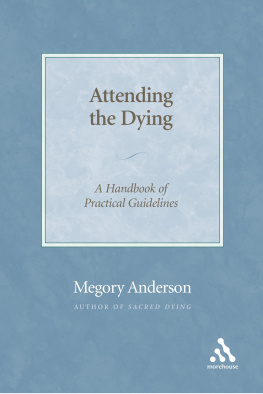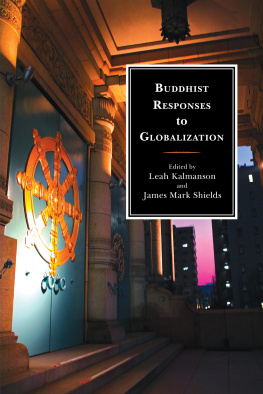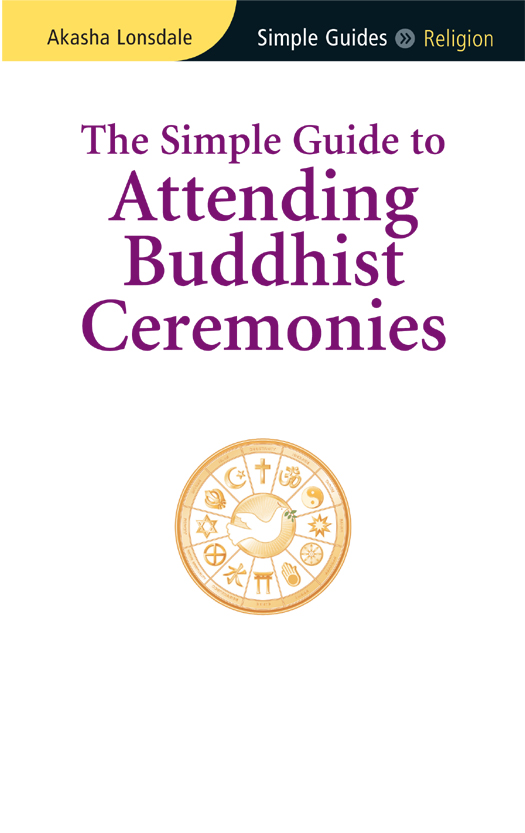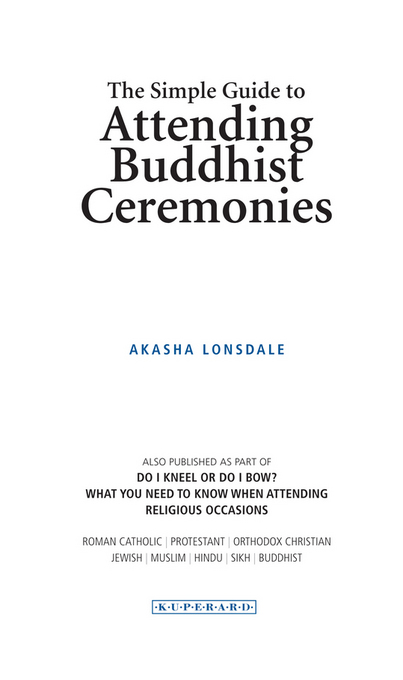Published in Great Britain by
Kuperard, an imprint of Bravo Ltd
59 Hutton Grove, London N12 8DS
www.kuperard.co.uk
Enquiries:
Copyright 2011 Kuperard
All rights reserved. No part of this publication may be reproduced, stored in a retrieval system, or transmitted in any form or by any means without prior permission in writing from the Publishers.
Series Editor Geoffrey Chesler
eISBN: 978-1-85733-653-5
British Library Cataloguing in Publication Data
A CIP catalogue entry for this book
is available from the British Library.
This e-book first featured as part of the multi-faith volume Do I Kneel or Do I Bow? What You Need to Know When Attending Religious Occasions (ISBN 978 1 85733 524 8). It describes and explains religious ceremonies that you may be invited to attend, and offers advice on how to behave, so that you dont inadvertently give offence or cause embarrassment to yourself or others. Because of the variety of traditions, customs and cultural influences within each religion, you may experience some differences from what is described here, but the basic forms and features of the ceremonies will be the same. Other titles are:
The Simple Guide to Attending Christian Ceremonies (eISBN 978 1 85733 646 7)
The Simple Guide to Attending Orthodox Christian Ceremonies (eISBN 978 1 85733 647 4)
The Simple Guide to Attending Jewish Ceremonies (eISBN 978 1 85733 648 1)
The Simple Guide to Attending Muslim Ceremonies (eISBN 978 1 85733 649 8)
The Simple Guide to Attending Hindu Ceremonies (eISBN 978 1 85733 651 1)
The Simple Guide to Attending Sikh Ceremonies (eISBN 978 1 85733 652 8)
Photo on Akasha Lonsdale
Images on the following pages are reproduced under Creative Commons Attribution ShareAlike Licenses 1.0, 2.0, 2.5 and 3.0: sam garza.
v3.1
ABOUT THE AUTHOR
AKASHA LONSDALE is an Interfaith Minister whose vocation brings her into frequent contact with with people of every faith and none. Her two-year seminary training in London included instruction in the major religions and sacred traditions of the world.
She has practised as a psychotherapist, both privately and within Britains National Health Service. Her corporate background was in senior human resource management. She is an executive coach, trainer, seminar speaker and frequent contributor to the media on topical issues. Specialising in Emotional Intelligence and Stress Management, she has written for a variety of publications, and her book How to Do Life Powerful Pointers for Powerful Living is a popular self-help title in the United Kingdom.
Akasha Lonsdale brings to The Simple Guide to Attending Buddhist Ceremonies an informed, sympathetic and practical approach born of wide knowledge, personal experience and psychological insight.
CONTENTS
WHATBUDDHISTSBELIEVE
Buddhism is more of a philosophy and a way of life than a faith, as Buddhists do not believe in a creator God. Individuals take responsibility for their thoughts, words and actions so as to be more content with their own lives, to help others and generally to live more effectively. The goal of the Buddhist is the attainment of nibbana, or nirvana, a state beyond all confusion and suffering. Buddhist practice is said to create joy, happiness, spontaneity, loving-kindness (metta), generosity, compassion and wisdom.
Much emphasis is placed on various forms of meditation, the most basic of which use the breath to help focus the mind, with the belief that regular practice, combined with study of the Buddhas teachings, leads to the cessation of suffering and, ultimately, enlightenment.
Prince Siddhartha Gautama, who later became the Buddha, was born in around 563 CE into a wealthy royal family of the Shakya clan in north-eastern India. Growing up, he lived a privileged, sheltered existence, protected from the harsh realities of life. In part this was the result of a deliberate decision by his father, the king. Soon after Siddharthas birth a holy man saw the infant and prophesied that he would either become a great chakravartin (wheel-turning king) or a great spiritual leader; being of the warrior caste, his father wanted him to be the former. To prevent his son from discovering suffering and the impermanence of life (anicca), the king arranged for him always to be cloistered in palaces, surrounded only by pleasure and beauty. However, having an enquiring mind and natural curiosity, Siddhartha felt imprisoned. With the help of a trusted servant he made four secret trips to the outside world, and for the first time encountered old age, sickness and death, which, his servant assured him, happened to everyone. He also encountered a poor but radiantly peaceful sadhu, or wandering holy man.
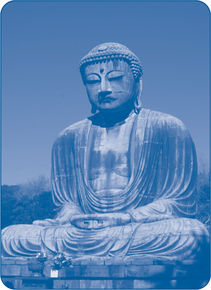
Monumental seated Buddha from the thirteenth century at Kamakura, Japan.
Shaken by his experiences, he left his wife and child and at the age of twenty-nine embarked upon a spiritual quest for the solution to the problem of suffering and mortality. He spent the next six years learning the ways of the holy men, fasting and living a life of such extreme asceticism that it took him to the brink of death. Only at that moment did he realise that this path would not give him the answers he sought, and he discovered the Middle Way, between the extremes of self-mortification and self-indulgence. Abandoning his austere life-style, he devoted himself to meditation. It is said that while immersed in contemplation under a fig tree which came to be called the bodhi tree, or tree of enlightenment he attained the highest state of knowledge and became the Buddha (one who has awakened to the truth).
| THE FOUR NOBLE TRUTHS |
Dukkha (the suffering nature of experience) |
The truth that birth, ageing, illness, despair, desire, anger, worry, failure, the impermanence of pleasure and fear of death cause suffering. |
Samudaya (the origin of suffering) |
The truth that suffering is caused by the constant tanha (craving) for life to be different in some way, for sensual pleasures and the wish to avoid unpleasant things. |
Nirodha (the cessation of suffering) |
The truth that freedom from suffering is possible through the removal of desire, hatred and ignorance. |
Marga (the path to release) |
The truth of the way to achieve freedom from suffering, known as the Noble Eightfold Path. |
| THE EIGHTFOLD PATH |
This teaching lays out eight precepts to follow on the path to enlightenment. They fall under three headings. |




